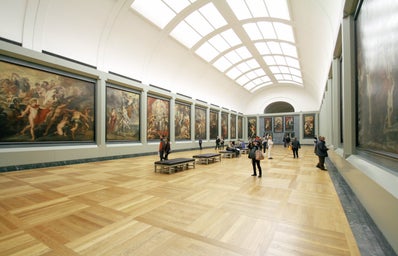“I am not sick. I am broken. But I am happy to be alive as long as I can paint.”
(Frida Kahal, Self-Portrait with the Portrait of Doctor Farill. Photo Credit: Artchive)
Frida Kahlo was a Mexican artist who is known for her self-portraits as well as her turbulent life during the Mexican Revolution under the rule of Porfirio Diaz. Her work is ardently celebrated by feminists due to her uncompromising depiction of the female experience and form.
Although Kahlo is known for her surrealism she insisted that she “painted her own reality”; indeed, her paintings represent Kahlo and her hardships frankly. In 1925, When Kahlo was only 18 years old, a bus accident compromised her quality of life and caused her to wear the orthopedic corsets so often depicted in her art. Kahlo spent three months recovering from the accident in a full-body cast, and although she eventually regained the ability to walk, she suffered chronic pain for the rest of her life. She also underwent as many as 35 operations and failed to conceive a child, miscarrying three times. Thus, for obvious reasons, her accident was to play a prominent role in her paintings.
Although Kahlo initially studied medicine, she abandoned the discipline and started painting. Her self-portraits immediately became the dominant motif within her work. A large portion of her work represents her inability to give birth successfully; Hospital Henry Ford, painted in 1932, the day after one of her miscarriages, she depicts herself naked, bleeding in a bed with filaments spewing from body like umbilical cords, connected to several objects of significant meaning to Kahlo personally. The most tragic is the perfectly formed fetus that she so desperately craved.
(Frida Kahlo: Hospital Henry Ford. Photo Credit: FridaKahlo.org)
Kahlo’s Self-Portrait with Thorn Necklace and Hummingbird is another of her most renowned pieces. The necklace is thought to be a reference to the constant pain Kahlo found herself in, whilst the bird, a pendant hanging from her neck, symbolises freedom and life. Although Kahlo employs a use of bright colours that one might associate with happiness and celebration, she creates a portrait of her suffering, and an image that is far more morose than it first seems.
Though she had a turbulent marriage with Diego Rivera to say the least, Kahlo’s high-profile relationship with her fellow artist had a significant influence on her own style; she had always admired his work and asked for his advice when pursuing a career. Both had numerous affairs and the couple divorced and remarried, only to remain unhappy.
Kahlo was also influenced by indigenous Mexican culture; her appreciation of Mexico’s heritage manifests itself through her use of bright colours despite sombre themes, as well as her heavy use of symbols such as the monkey, a representation of lust in Mexican mythology.
Kahlo’s work was not widely acclaimed until after her death in 1954; the 1982 retrospective of her work at the Whitechapel Gallery in London was to prove so popular that it eventually toured around the world, and Kahlo slowly gained international posthumous recognition.
(Featured photo credit: Nickolas Muray)


